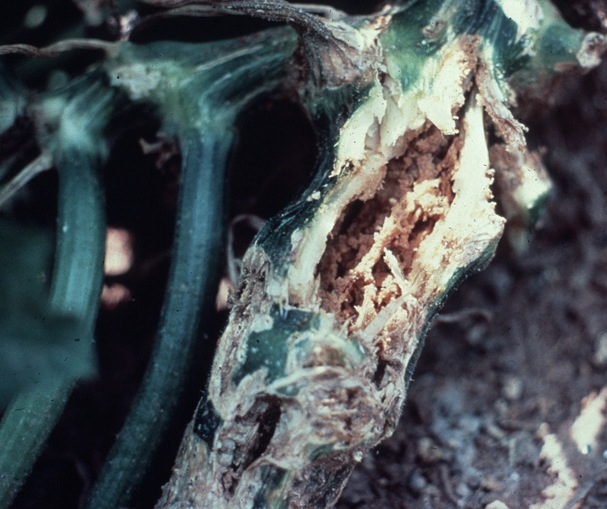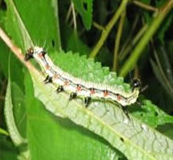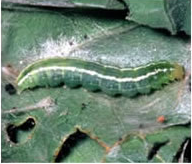Sandy loam rich in organic matter with good drainage and pH range of 6.5-7.5
Apply a dose of 200:100:100 kg NPK/ha throughout the cropping period through split application
| Stage | Crop stage | Duration in days | Fertilizer grade | Total Fertilizer (kg/ha) | Nutrient supplied | % requirement | ||||
| N | P | K | N | P | K | |||||
| 1 | Crop establishment stage | 10 | 19:19:19 + MN Urea | 26.81 11.00 29.03 | 5.00 1.43 13.35 | 5.00 – – | 5.00 4.95 – | 10.00 | 5.00 | 10.00 |
| Subtotal | 19.78 | 5.00 | 9.95 | |||||||
| 2 | Vegetative stage | 30 | 12-61-0 13-0-45 Urea | 12.28 66.00 109.00 | 1.47 8.58 50.14 | 7.49 – – | – 29.70 – | 30.00 | 7.50 | 30.00 |
| Subtotal | 60.19 | 7.49 | 29.70 | |||||||
| 3 | Flower initiation to first picking | 30 | 12-61-0 13-0-45 Urea | 12.28 44.00 115.00 | 1.47 5.72 52.90 | 7.49 – – | – 19.80 – | 30.00 | 7.50 | 20.00 |
| Subtotal | 60.09 | 7.49 | 19.80 | |||||||
| 4 | Harvesting stage | 45 | 19:19:19 + MN 13-0-45 Urea | 26.31 78.00 97.52 | 5.00 10.14 44.86 | 5.00 – – | 5.00 35.10 – | 30.00 | 5.00 | 40.00 |
| Total duration | 115 days | Subtotal | 60.00 | 5.00 | 40.10 | |||||
| Total | 200.06 | 24.98 (or) 25.00 | 99.35 (or) 100.00 | 100 | 25 | 100 | ||||
*75% RD of Phosphorus applied as superphosphate = 469kg/ha.
1. 19:19:19 = 53 kg/ha
2. 13:0:45 = 199kg/ha
3. 12:61:0 = 25 kg/ha
4. Urea = 351kg/ha
Manganese |
| Deficiency Symptoms |
|
| Correction Measure |
Foliar spray of 0.5% MnSO4. |
1.Gummy Stem Blight: Mycosphaerella melonis
Symptoms
Management
2.Bacterial Wilt: Erwinia tracheiphila
Symptoms
Management
3.Fusarium Wilt: Fusarium oxysporum f. sp. melonis
Symptoms
Management
4.Anthracnose Colletotrichum orbiculare
Symptoms
Management
5.Sudden Wilt
Symptoms
Management
6.Powdery mildew: Erysiphe cichoracearum
Symptoms
Management
7.Alternaria Blight: Alternaria cucumerina
Symptoms
Management
8.Downy mildew: Pseudoperonospora cubensis
Symptoms
Management
1.Fruit flies: Bactrocera cucurbitae
Symptoms of damage:
|
Management:
2.Pumpkin beetles: Red Beetle: Aulacophora foveicollis

Symptoms of damage:
Management:
3.Stem borer or clear winged moth: Melittia eurytion

Symptoms of damage:
Management:
4.Stem gall fly: Neolasioptera falcata

Symptoms of damage:
Management:
5.Snake gourd semilooper: Plusia peponis

Symptoms of damage:
Management:
6.Pumpkin caterpillar: Diaphania indica

Symptoms of damage:
Management:
7.Bottle gourd plume moth: Sphenarches caffer

Symptoms of damage:
Management:
8.Leaf miner: Liriomyza trifolii
|
Varieties : 25 – 30 t/ha in 120 days.
Hybrids : 80-90 t/ha
Crop Growing districts Kancheepuram, Villupuram, Thiruvallur
Major markets in Tamil Nadu Coimbatore, Chennai Preferred Varieties and hybrids Mithila, Suganthi, Kiran, Simran, Vishal
Grade Specification Symmetrical and uniform in appearance.
The surface should be waxy and bright in appearance devoid of scars, sunburn, transit abrasions or other surface defects.
